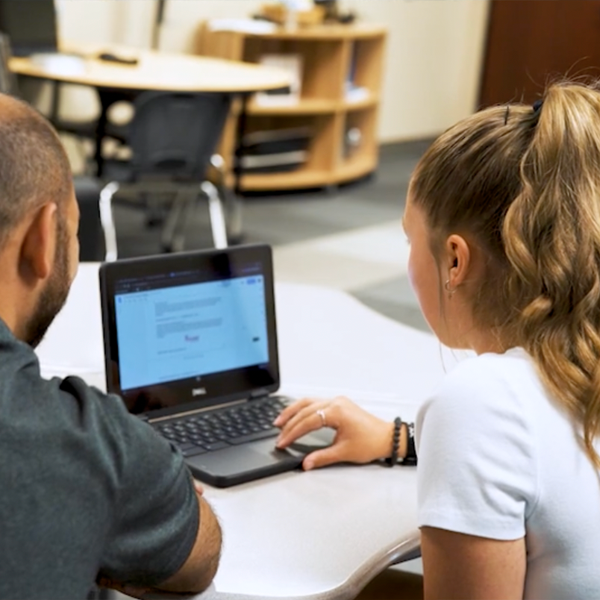Using Data to Drive Success
in Your Online School
Among the benefits of online learning and the use of educational technology tools is the availability of data.
Perhaps you’ve heard a line like that many times in your career. . . at a conference, in webinars, or at meetings.
You may have noticed that despite “data” being mentioned quite often, very few people actually get into the details of what that means. When asked, they tend to toss out general ideas such as “you can understand more about your students.”
Although that statement is true, it doesn’t go nearly far enough in explaining how data can be used to improve student outcomes, which is why we held a webinar that brought together key people from the iSucceed Virtual Schools in Idaho to discuss how they use student data to improve instruction, and how StrongMind’s systems provide key support for gathering the data.
How does iSucceed do it? Here are four key elements:


They focus on what students and teachers need — not just what the state requires
States require that all schools report various data points, and in some states with particularly complex reporting requirements, schools make considerable effort to collect and report that data. In addition, schools have to administer state assessments for certain sets of students.
Often, the data reported to the state isn’t very helpful to the school. For example, state assessment results are rarely provided quickly enough to provide actionable information that helps to shape instruction. In other cases, such as for online schools like iSucceed, the data reporting requirements were formed around data that makes sense for brick-and-mortar district and schools but is far less informative for schools with flexible learning models.
Early on, iSucceed’s leaders thought about the data that they needed to improve instruction. Katie Allison, iSucceed Executive Director, focused on students and parents. “We decided that student engagement was most important, and we would figure out the data points and systems that would allow us to track engagement. We had to address accountability for the state, but we also had to decide what would work for us to improve instruction.”
They use their technology platform to track student outcomes early and often
Clayton Trehal, iSucceed Principal, delves more deeply into the distinction between state data and instructional data. For high school students, he explains how states look at graduation rates and states assessment scores — each of which is generated exactly once in a high school student’s career. That information is clearly not actionable on instructional terms. As Trehal explains,
“Most people have the capability to run some kind of report to show student progress. We focus on doing that every Monday, looking at progress each week. We operate in nine week terms, so we can constantly see if a student is keeping pace against a nine week term.
We tell students you have these courses and these lessons. And we tell students that if they aren’t caught up on lessons each week they aren’t keeping up on ‘attendance.’ Attendance for us doesn’t mean showing up, it means working.
We tell students on Friday how their progress is, and it’s amazing how much catching up we see by Monday.
We have been doing this for years, but we are constantly tweaking our approach. Our pass rate is increasing, our average grade is improving. None of these changes happened immediately, but we are consistently seeing increases of one or two percentage points.”
It’s a full team approach
iSucceed’s approach to using data starts with the school’s leadership and it is implemented with each individual student by teachers and counselors. On the webinar, counselor Crystal Sistoni and teacher Anna Nelson discussed the ways in which they are watching student engagement and outcomes, consistently throughout each nine-week term. Sistoni explained how she and other counselors look at each student’s trajectory towards graduation, every quarter.
Anna Nelson believes that a key difference between iSucceed and other schools is the way that the use of student data is ingrained into her planning. She uses the term “data habits” to talk about the extent to which using data to constantly understand each student’s academic status is simply an expectation, a normal part of her teaching, which she has now internalized. Other schools think in terms of occasional “interventions” to address student needs, but at iSucceed she is constantly fine-tuning her instruction.

They have a partner that supports them
iSucceed has seen improving outcomes, in part due to the school’s focus on students and data. The school’s leaders also credit the content, technology, and support they receive from StrongMind. They truly see their relationship with StrongMind as a partnership, in which StrongMind provides the systems and supports to make the school and students successful.
The full webinar recording is available here, or contact us if you would like to learn more.
